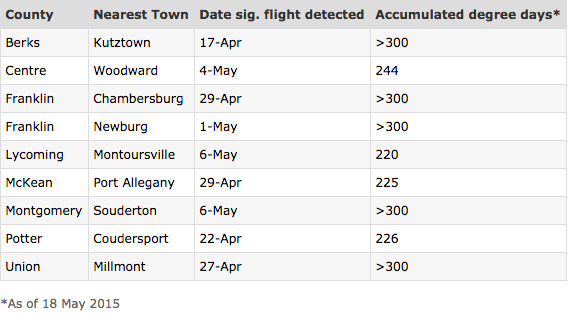Source: Penn State Extension
It is about time to scout corn fields for black cutworm. Nine traps in our Black Cutworm Monitoring Network detected significant flights of this pest species. These locales should have elevated risks in corn of cutting damage by caterpillars later in the spring. The current list is below.
Many of these locations have already exceeded 300 degree days, so scouting should be happening now or in the near future as the other sites reach 300. Even if your farm is not close to these locations, we urge you walk your fields for signs of damage. Across the eastern U.S., black cutworm flights have been heavier than average, suggesting that the risk for damage from their offspring (caterpillars) is relatively high.
Black cutworm populations are usually very patchy, and adjacent fields can have quite different populations depending on presence of cool-season weeds and where females choose to lay eggs. Before spraying insecticides indiscriminately, or perhaps unnecessarily adding them to tank-mixes of other pesticides, scout your fields to see if the insect pests are present.

While some Bt varieties can slow down black cutworm, insecticidal seed treatments are not that strong against them, so rescue treatments are usually the most efficient and economical tactic for managing black cutworm. For more information and economic thresholds, see this fact sheet.
True armyworm has a similar lifecycle to black cutworm (migrating north on spring storm fronts), but poses a slightly different risk to more crop species because large numbers of armyworm can occur in one location, leading to quick defoliation. While it may be early for armyworm damage in corn, armyworm flights have been relatively high in some Midwestern states, thus there is a risk of head clipping and/or defoliation in wheat, and defoliation in hay fields. Keep an eye on those fields to see if damage develops. A recently revised fact sheet provides more information on armyworm.






Post a comment
Report Abusive Comment